#its the mix of truth and comedy and genuineness and the fantastic in the mundane
Photo
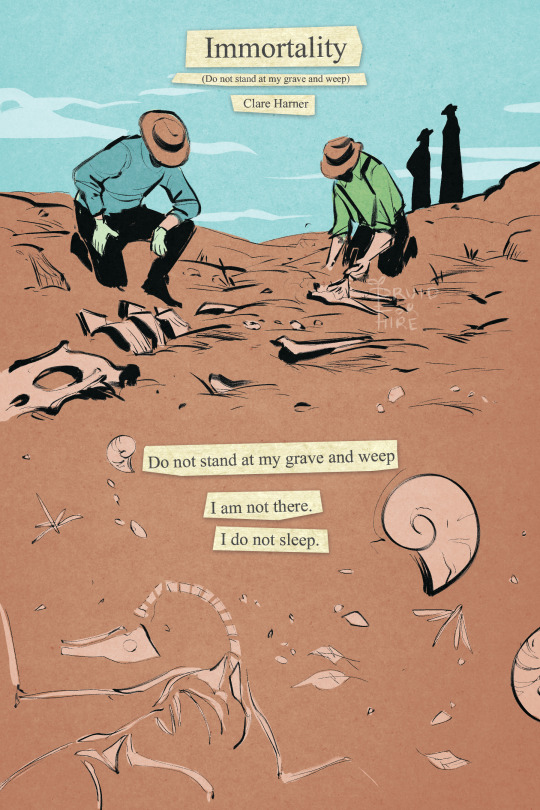

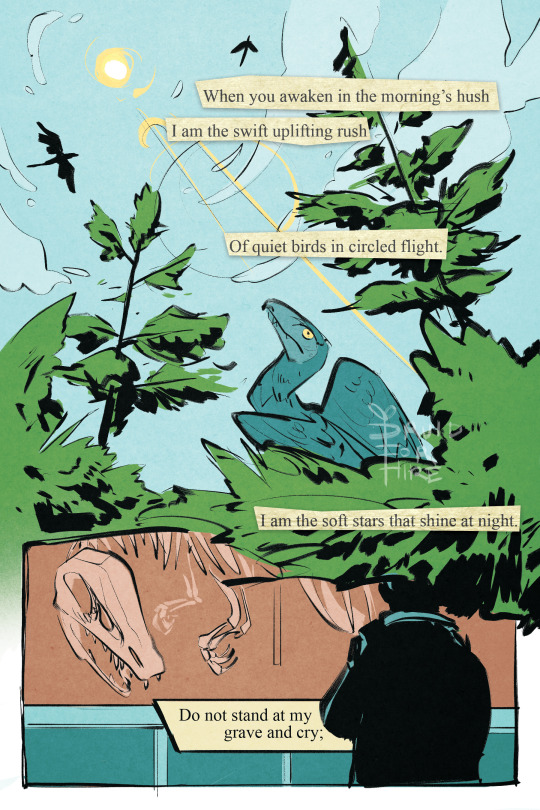
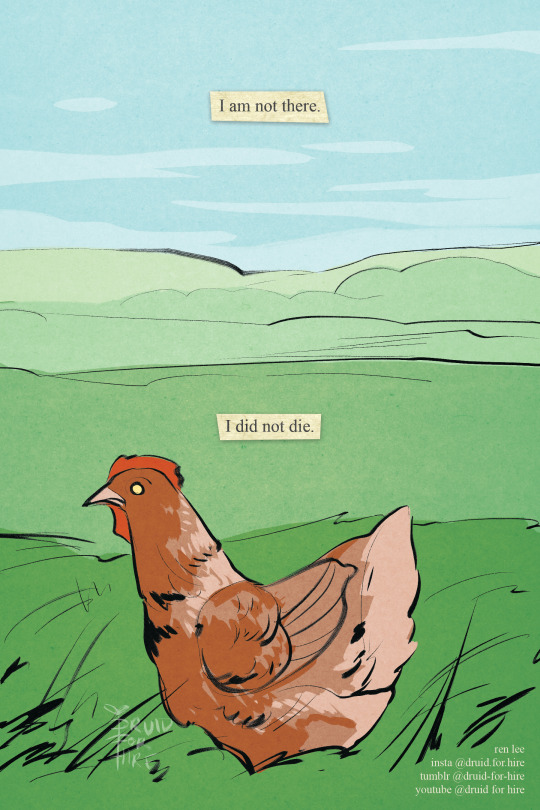
[image id: a four-page comic. it is titled "immortality” after the poem by clare harner (more popularly known as “do not stand at my grave and weep”). the first page shows paleontologists digging up fossils at a dig. it reads, “do not stand at my grave and weep. i am not there. i do not sleep.” page two features several prehistoric creatures living in the wild. not featured but notable, each have modern descendants: horses, cetaceans, horsetail plants, and crocodilians. it reads, “i am a thousand winds that blow. i am the diamond glints on snow. i am the sunlight on ripened grain. i am the gentle autumn rain.” the third page shows archaeopteryx in the treetops and the skies, then a modern museum-goer reading the placard on a fossil display. it reads, “when you awaken in the morning’s hush, i am the swift uplifting rush, of quiet birds in circled flight. i am the soft stars that shine at night. do not stand at my grave and cry.” the fourth page shows a chicken in a field. it reads, “i am not there. i did not die” / end id]
a comic i made in about 15 hours for my school’s comic anthology. the theme was “evolution”
#dinosaur#evolution#comic#prehistoric#animal#wildlife#paleontology#biology#poetry#comics#original#my art#archaeopteryx has no direct living descendants i know#but i wanted something aerial and the dinosaur to bird connection is classic and well known anyway#also the chicken over any other bird is very on purpose#its the mix of truth and comedy and genuineness and the fantastic in the mundane#its me asking you to see something so wonderful in something taken so un-seriously#and to love it both ways#also the jurassic park thing#where someone saw the reconstructed gait of a dino#and said. hey hang on. i know that walk.#and pulled up footage of a chicken walking#which jumpstarted the entire study into the link between dinosaurs and birds#in the end take whatever you want from it i just thought id provide some insight#i always like it when other artists do#the point is that i enjoy when people laugh at the end and when they dont#and i like it when they cry. i like it best when they both laugh and cry. eeaao intent#anyway mourn your losses but to live is to change#also hi guys i finally figured out tipping after 5 months so no more annoying ko-fi link
145K notes
·
View notes
Photo

Horror.
Letterboxd presents our community’s 25 top rated horror films of all time.
With the release this month of the newest Halloween, and an embarrassment of riches in the form of thousands of new horror film reviews thanks to all the Hoop-tober / Shocktober / 31 Days of Horror challenges, we are feeling brave enough to open the crypt and pull out the Letterboxd community’s 25 Highest Rated Horror Films of All Time.
Don’t @ or stab us, these are computed from your ratings of all feature-length films tagged in our horror genre, as at 24 October 2018. It’s a wide-ranging list, with some perhaps surprising omissions—for example, the original Halloween, Night of the Living Dead and Evil Dead 2 all just missed the cut. See the full list or read on for data insights and member reviews of our highest rated horrors.
Strangling the numbers:
Though there is some genre crossover (into comedy with Young Frankenstein, mockumentary with What We Do in the Shadows and One Cut of the Dead, and zom-rom-com with Shaun of the Dead), these films are all categorized as horrors by us (and IMDb).
In the battle of great horror decades, the scary sixties wins with seven films, over five films from the slasher seventies and three from the evil eighties. Shout out to the terror twenties, with three films.
By country, USA has most films in the list, but Japan comes in strong second with four, Germany has three and France, Sweden and the UK are represented with two each. India, New Zealand and the Czech Republic also make the cut.
The most obscure film on the list (from a Western perspective) is Manichitrathazhu, from Kerala-born director Fazil, watched by just over 250 members.
All the directors are dudes. We can’t make any excuses for that, but we can point out that, behind-the-scenes and on-screen, women played important roles in these films. The Phantom Carriage, for example, is based on the novel by Sweden’s Selma Lagerlöf, who in 1909 was the first woman to win the Nobel Prize in Literature. And what would Jaws be without the editing prowess of Verna Fields?
There are five films on the list from this century, some by directors of color, including Jordan Peele, Jemaine Clement and Taika Waititi. Roll on the 21st century of horror.
On that note: this top 25 is based on member ratings, but we also have a popularity index—based on the sheer amount of activity for each film regardless of rating—which produces quite a different list, heavily favoring the 21st century.
Letterboxd’s 25 Highest Rated Horror Films (as at October 2018):

1. Psycho (1960, USA)
Directed by Alfred Hitchcock
“Throughout his career, director Alfred Hitchcock has enriched the world of cinema with some truly groundbreaking thrillers and despite that, Psycho feels like something of a first from him. It’s his first stint with the genre of horror, it breaks through the barriers of censorship unlike any film before and over the years, it has played a major role in influencing not only films but pop-culture as well.” —CinemaClown
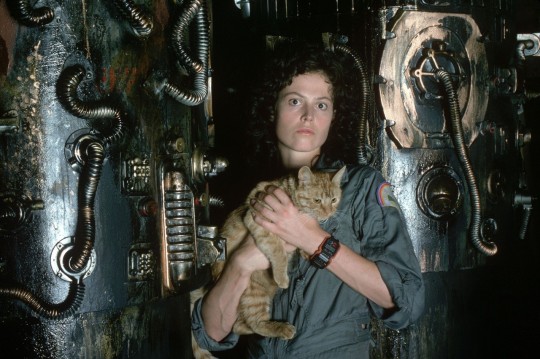
2. Alien (1979, USA)
Directed by Ridley Scott
“When shit hits the fan it comes with the best first impression of any monster. PERIOD.” —TKettle
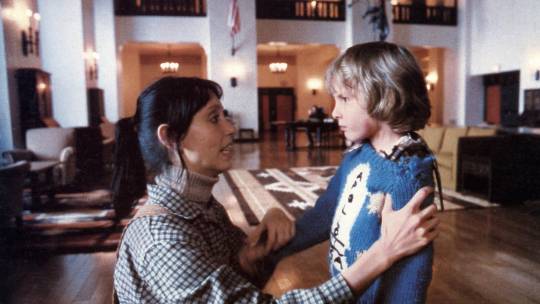
3. The Shining (1980, USA)
Directed by Stanley Kubrick
“As soon as Jack Torrance is in frame, that uneasy feeling takes over. I feel as though I wish I could warn all of the other characters in the movie to walk on eggshells, don’t upset him! Maybe you shouldn’t talk to him right now! Can’t you see it! Just leave him alone! There has never been another character to give me such all-consuming anxiety.” —HollieHorror

4. The Thing (1982, USA)
Directed by John Carpenter
“The man responsible for the movie’s stomach-churning physical effects deserves most of the credit for its appeal and success. Rob Bottin worked so hard he was hospitalized for exhaustion, pneumonia and a bleeding ulcer! And he was only 21 at the time! Pure underrated genius.” —Josh Stoddard
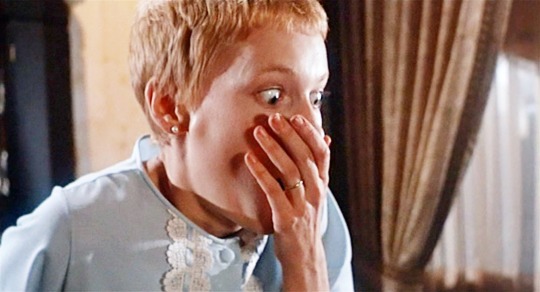
5. Rosemary’s Baby (1968, USA)
Directed by Roman Polański
“I’m awestruck by how good this is. Every little detail from the very beginning means something and you really experience exactly what Rosemary experiences. Masterful spectatorship alignment.” —Sean Upton
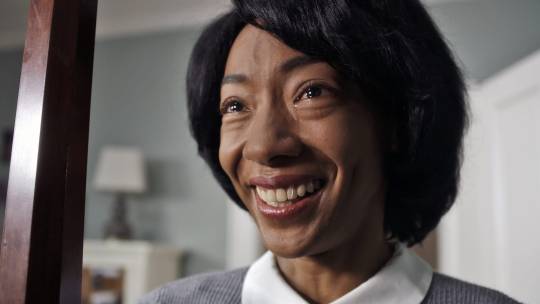
6. Get Out (2017, USA)
Directed by Jordan Peele
“When you prod underneath the surface here there’s so much just waiting to be unpacked. As a piece of writing it’s a masterclass in foreshadowing and subtext.” —Alex Secker

7. Jaws (1975, USA)
Directed by Steven Spielberg
“Bruce, the mechanical shark, still works today. Even with all the VFX-heavy films that are commonplace now, the shark is [as] scary and compelling now as it was in 1975. The camerawork is masterful, and it feels like films now are still trying to catch up to what was happening behind the camera on this movie.” —EJ Moreno
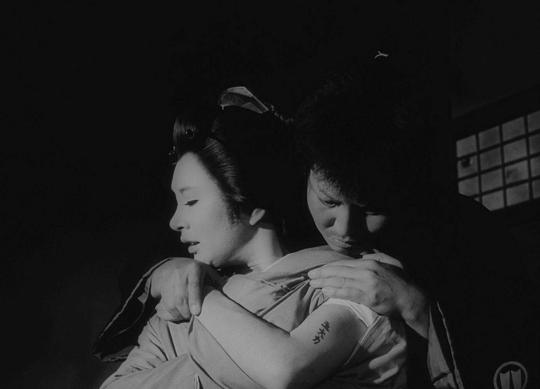
8. 修羅 (Demons) (1971, Japan)
Directed by Toshio Matsumoto
“Matsumoto è stato uno dei più grandi innovatori del cinema giapponese e fonte di ispirazione di grandi registi del cinema mondiale. Quest’opera non fa che confermarne l’importanza e la genialità.”
Translation: “Matsumoto was one of the greatest innovators of Japanese cinema and a source of inspiration for great world cinema directors. This work confirms his importance and genius.” —Tonino Mannella
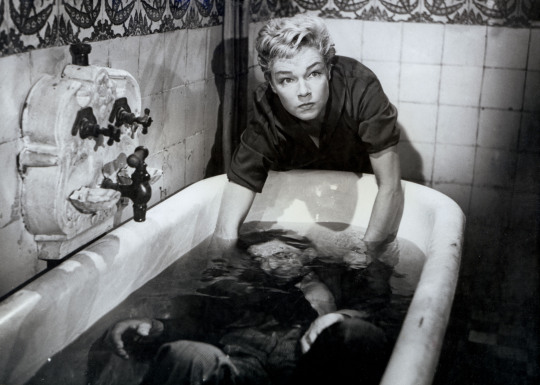
9. Les Diaboliques (Diabolique) (1955, France)
Directed by Henri-Georges Clouzot
“It was extremely suspenseful and you can see how this film had such a huge impact on Hitchcock when he made Psycho… Five out of five overly dramatic heart attacks.” —Libby Ajayi
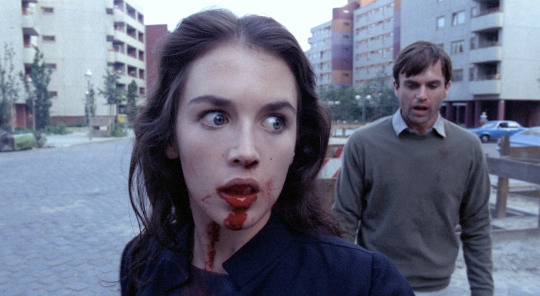
10. Possession (1981, Germany, France)
Directed by Andrzej Żuławski
“Ana’s spectral screams as she flows and dances like a ghoul in the subway. All I could do was cry at it, with her, for her.” —Claire Diane

11. 怪談 (Kwaidan) (1964, Japan)
Directed by Masaki Kobayashi
“Every frame of this movie is a piece of art… To ask for more would be greedy.” —Gabe
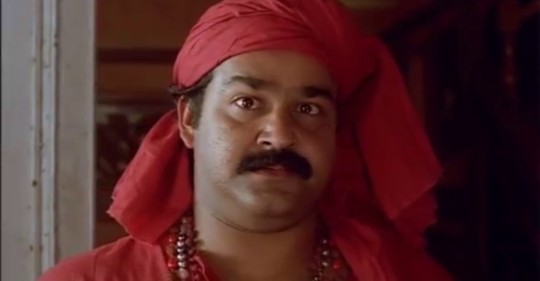
12. മണിച്ചിത്രത്താഴ് (Manichitrathazhu) (1993, India)
Directed by Fazil
“Perhaps the most popular film to come out of Kerala in this generation. The screenplay, the performance, and the plot are worth a study in [themselves]. Fantastic package of thrilling entertainment and storytelling.” —Vinay Warrier
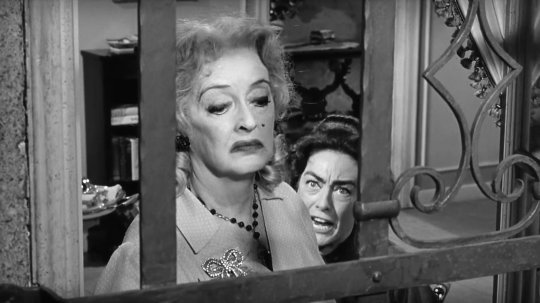
13. Whatever Happened to Baby Jane? (1962, USA)
Directed by Robert Aldrich
“Normally my heart really aches for ‘crazy’ characters who have been brutalized by the concept of womanhood but… it’s very hard for me to feel bad for Baby Jane.” —Caroline
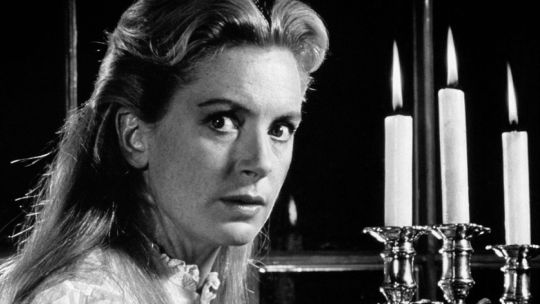
14. The Innocents (1961, UK)
Directed by Jack Clayton
“Exquisite and captivating… it’s the only movie I’ve watched this Hooptober that has genuinely scared me. Squirming, nail biting, chills down the back, all of it.” —Xebeche
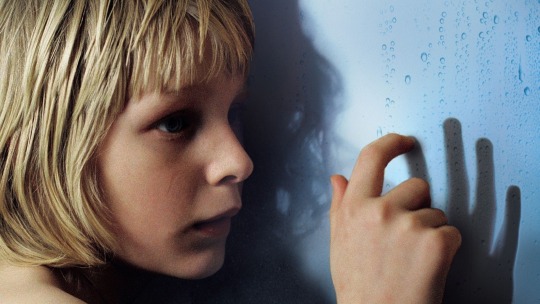
15. Låt den rätte komma in (Let the Right One In) (2008, Sweden)
Directed by Tomas Alfredson
“Deep down, it’s just a story about human misunderstanding, but it is gracefully put together to give you a thrilling ride that will make you root for an evil you’re not really sure is there. It makes you question your moral standards and puts you in a nice grey area.” —Charlie Bluu

16. カメラを止めるな! (One Cut of the Dead) (2017, Japan)
Directed by Shin'ichirô Ueda
“The film starts as a Z-list zombie movie and looks cheesy as hell, but when we discover we are watching more of a mockumentary of this film being made and the director on the verge of a breakdown, the fun really begins. The first 37 minutes are completely one cut… one cut, that actually blows my mind.” —Coles84
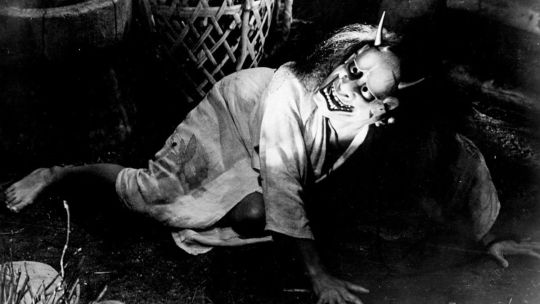
17. 鬼婆 (Onibaba) (1964, Japan)
Directed by Kaneto Shindō
“In good ol’ black and white, Onibaba is a visually stunning erotic horror film painted in deep shadows and flesh… it’s less a ghost or monster tale and more of a morality play about the passions and desperation that arise in splintered, war-torn communities, and how no matter what we fear, we are ultimately our own demons. Creepy, sensual and effective.” —Doug Bellak
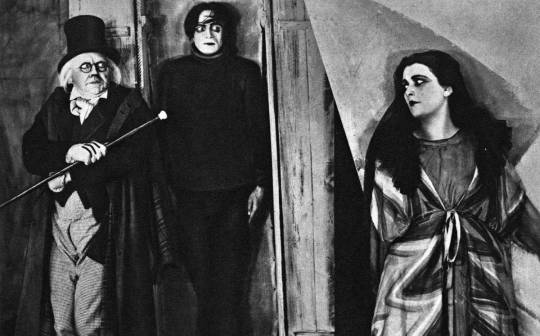
18. Das Cabinet des Dr. Caligari (The Cabinet of Dr. Caligari) (1920, Germany)
Directed by Robert Wiene
“From Murnau’s Nosferatu and the American noir of the 1940s, to contemporary horror films and every piece of work where Tim Burton asks Johnny Depp to dab black around the actor’s eyes, the influence of Wiene’s film can be felt… it is the stuff of nightmares that still has power nearly a century after it was made.” —Travis Lytle
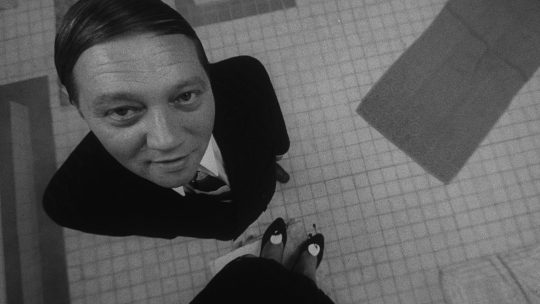
19. Spalovač mrtvol (The Cremator) (1968, Czechia)
Directed by Juraj Herz
“I find it hard to fathom a film as stylish and mesmerizing as this is, 45 years old! It was obviously way ahead of its time! The cinematography is as captivating as the film is deliciously macabre!” —Juli Norwood

20. The Exorcist (1973, USA)
Directed by William Friedkin
“The Exorcist remains one of the greatest achievements of the horror genre. The things they were able to accomplish with sound mixing at the time have yet to be outdone. The makeup department deserves a heap of credit, and the effects still look great. Acting is something that typically gets sacrificed in most horror movies, but this is one exception where every actor delivers a quality performance.” —Sean

21. Körkarlen (The Phantom Carriage) (1921, Sweden)
Directed by Victor Sjöström
“It was not for nothing that Selma Lagerlöf became the first woman to get the Nobel Prize. She’s a great storyteller, and there’s a melody in her writings that is hard to not get sucked into… Victor Sjöström has really understood the tone of the novel and the music that comes with it is in tune with the melody of Lagerlöf's writings.” —Terése Flynn

22. Faust – Eine deutsche Volkssage (Faust) (1926, Germany)
Directed by F. W. Murnau
“I watch this, and cannot fathom how this one man could make the cinematic medium look so relentlessly groundbreaking in its mere infancy. It’s obscene that he died so young… in a sense, Faust’s quest for the ur-truth becomes Murnau’s own quest for his own epic cinema: one that maximizes the potential for awe at every turn, leaving behind mundane methods for totalizing ones.” —Darkness Lingers
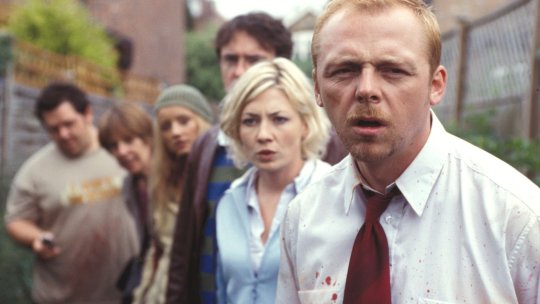
23. Shaun of the Dead (2004, UK)
Directed by Edgar Wright
“I understand tossing Batman when your other options are [Prince’s] two biggest contributions to the world of music, but it still saddens me that Shaun and Ed so carelessly tossed away a truly undervalued record. Perhaps, we all do crazy things when we’re trying to survive.” —Willow Maclay
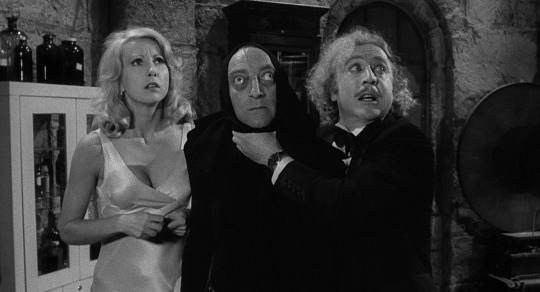
24. Young Frankenstein (1974, USA)
Directed by Mel Brooks
“When Mel hits, he hits big… [he] may not employ nuance often, but he’s got broad comedy and wordplay down pat, and some of his best examples of this are in Young Frankenstein.” —Joe Campbell
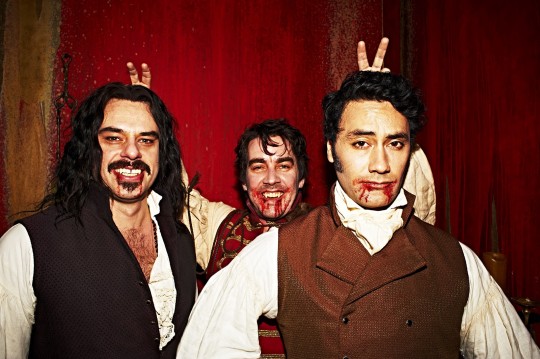
25. What We Do in the Shadows (2014, New Zealand)
Directed by Jemaine Clement and Taika Waititi
“An absolute must-watch for fans of horror comedy, horror, vampires, brilliant comedy in general, and great improvization. According to their IMDb trivia, Taika Waititi, Jemaine Clement and co. shot over 125 hours of improv for this film before finally whittling it down to 90 minutes of the best stuff.” —Voidember
Right. Now that that’s all done with, we are ready to go into town and party.
#highest rated#horror#horror films#25 highest rated horror films#psycho#alien#what we do in the shadows#alfred hitchcock#letterboxd#best of
67 notes
·
View notes
Text
Winter 2017 Anime Awards!

(From the ones I actually watched.)
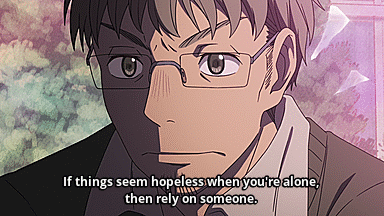
Best Overall: 3-gatsu no Lion/ March Comes in like a Lion
Into the light.
With consistent quality during the second part despite a shift in focus, perfectly managed tone that never leads to excess sentimentality or overt levity, and a story that ebbs and flows with such grace that it melts metaphor and direct description like an impressionist painting, Chica Umino's March Comes in Like a Lion remains the top spot for two consecutive seasons for the simple reason that it tells a rich story of individuals and making meaning.
In the first part, it introduces shogi professional, sometimes student, and introvert Rei Kiriyama and the facets of his life, particularly his close ties with the Kawamoto siblings. At the beginning of Part 2, Rei hugs the youngest Kawamoto sibling, Momo, and says that he has personal and professional matters to deal. While he sees the Kawamoto family as comfort and healing, he understands that he can't come running to them each time. With a major tournament upcoming he stops visiting them and the narrative shifts to the lives of the Shogi players that he plays against. With their own dreams and regrets, he becomes an observer of their lives as he compares it against his own, not to pass judgement on his failings, but to see the possibilities there is to life and to recognize that in the end, there are no bad guys, just people driven by very different motivations and showing how they cope with the consequences of a lifetime of choices.
With another season later in the year and a two-part live action movie currently showing in Japan, the series deserves all the accolades it gets. And if you're ever in the market for something substantial, with a deep, beating heart, this is your anime.

Best Drama: Youjo Senki, The Saga of Tanya the Evil
What is a god to an non-believer?
Tanya von Degurechaff is the fiercest, deadliest, and most cunning soldier of the Empire (Not-Germany) as they wage the first World War (Until it becomes muddled when they introduce a Panzerkampfwagen IV.). She's also under thirteen years old and is hated by God, or a god.
Why is that?
The god sees Tanya has such little faith in him and has therefore cursed her: Should she die a death that is not natural, she will be taken off the wheel of reincarnation and sent to hell.
But why a kid? And why so much hatred for an individual?
While these questions are answered to an extent, the most important thing to consider is that these driving forces are what sets up Tanya as she is placed in conflict for most of the war as she struggles to survive. She puts in as many legal means as possible to leave the war, only to have her end up on the front lines anyway, whether by her own fault, or by divine intervention.
As she leaves a trail of bodies, her actions reverberate throughout the war as everyone slowly pushes down into a black hole, no matter who is winning. And as with the nature of war, there are no heroes, only murderers.
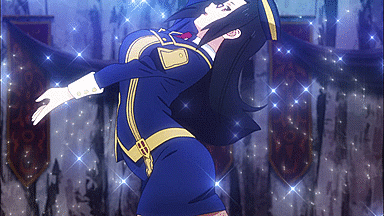
Best Comedy: Kono Subarashii Sekai ni Shukufuku o!
"This anime is like every insane D&D story I have ever heard." -henlp
The second season of Konosuba! continues the adventures of Satou Kazuma as he is pulled from the real world into a fantasy world where RPG game mechanics exist in reality. He's accompanied by a Goddess who drinks too much and wastes her skill points on party tricks, a Wizard who knows only one spell (and collapses after every use), and a Crusader who can tank, but cannot hit any living thing with her sword (not out of principle, she just can't hit at all). Also, that Crusader is a masochist.
"Insane and crazy" is the proper descriptor for the way the series is plotted, as comedic plot points are introduced and escalated versions of those plot points are put to use later on. The characters are made aware that they are in the mess they are in because of the solution that resolved a previous conflict made ample fuel for another. "It gets worse" is another descriptor as they are battered by bad luck and only somehow manage to escape as even their most competent moments are displays of excellence borne out of their utter stupidity. It's a show that's shameless enough to throw everything at a wall to make you laugh, and most of the time, what they throw in, sticks.
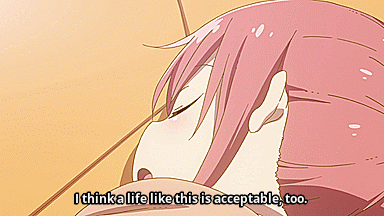
Honorable Mention: Kobayashi-san Chi no Maid Dragon
The Lion falls in love with the Mouse.
Miss Kobayashi is a Systems Engineer who, after a night of drunken revelry, somehow saves the life of a dragon, Tohru. Still drunk, she invites the Dragon back to her apartment, and into her life.
Unlike Konosuba! which fills narrative space with ever increasing, crazy humor, Miss Kobayashi's strength is mixing in the fantastical elements with the mundane, to create the comedy or the heart-warming plots, something that Gabriel DropOut only marginally succeeded in doing.
All throughout are discussions on the comfort between partners and the lives of people from vastly different backgrounds. It's about love and growing into it, even though we've largely been on autopilot. It's about the surprise we get when we realize to what degree people can love us for.

Best Cute Girl Anime: Demi-chan wa Kataritai, Interview with Monster Girls
Science, Folklore, and Free Hugs
Almost all Cute Girl Anime narratives occur within a casting closed system, that is, primary and secondary characters are all girls and they play off their antics onto each other and whatever conflict they find themselves in. So this is a very special case where the Primary female characters shine in their characterization with the aid of a Primary male character, Takahashi Tetsuo, Biology teacher, Demi-Human Researcher, and member of the pantheon of the "Greatest Teachers in Fiction".
So for the girls, we have Takanashi Hikari, vampire, Machi Kyouko, dullahan, Elsa, Kusakabi Yuki, a snow woman, and Satou Sakie, succubus and Math teacher.
The daily motions of these monster girls is already interesting enough, but a subtle beauty comes from the setting and the way the plot is crafted with a keen eye for science and human foibles.
The world-building is present but hardly emphasized, and shows how the world accommodates the Demi-Humans and their special needs. Vampires get blood packs subsidized by the government, Succubi get visits from Demi-Human agencies to check up on how well they're adjusting to their environment, and the rest are treated not so much because they're demi-humans, but how they are as people. Kusakabe Yuki, for instance, is seen as cold by a few of her peers, but never attribute her nature as a snow woman to be the cause.
The science part is interesting, because several chapters detail efforts by Takahashi trying to explain the physiology of the Demi-Humans, drawing on folklore for insight and the scientific method to explain "how" they function, without asking "why". In Magical Realism, whys have never been the point anyway.
And so we have a Cute Girl anime that stands above and beyond what is generally expected of the genre. By having the willingness to introduce other characters in the mix, we experience something a bit more different in how humor is constructed and how conflict is resolved. True to its efforts to ground itself through science, the warmth comes off even more genuine and realistic.
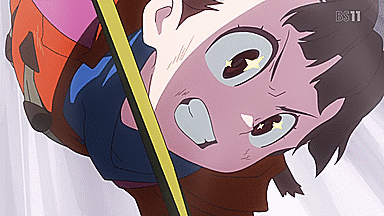
Best Sci-Fi/ Fantasy: Little Witch Academia
Better than Harry Potter.
What started off as a crowd-funded film about a young girl aspring to become a great witch, has turned into a full-blown series as it should have from the start. It carries with it all the trademarks of Trigger: Stark and clean character design, slick animation, and a wild ride of a story. Whereas previous works were about killer clothes and literal shared experiences, this one is a straight-forward romp into the realm of fantasy.
Except, while the premise is straight-forward, the execution has all the majesty and scope of an epic tightly-knit inside the trappings of what is essentially a coming-of-age, high school story. Add a pinch of the ever classic industry versus magic trope, excellent characters and well-realized relationships, and you have something that only ever appears plain and overdone.

Best Girl: Tsukinose Vignette April from Gabriel DropOut
No good or evil, only kawaii.
I have reached the conclusion that in the world of Gabriel DropOut, the one reason neither Heaven nor Hell have made any greater stride against the other is not because of balance, but rather because both are equally inept.
That being said, Tsukinose Vignette April, a demon from Hell, is the worst kind of inept but the also the best kind of character to be best girl: Kind, disciplined, being the one person responsible enough to go over to Gabriel's home to wake her up for school, scared of horror movies, and just... angelic. Compound her difficulty with being the only straight man in a comedy quartet gives her the patience of a saint.
Some people, like Gabriel, could never grasp the responsibility of being a divine being. For Vignette, she was just unlucky enough to not have been born to a role she's a natural in: that of a normal human being.

Best OP: "Shadow and Truth" by ONE III NOTES from ACCA: 13-Territory Inspection Dept.
"It's never really what it seems."
In the latest of slice-of-life/ food/ mystery anime is ACCA: 13-Territory Inspection Dept, where Otus tries to do his job as inspector in what is ostensibly a Fascist state that is under rumors of a coup.
Of course, the general goal of any good OP is to draw the viewer into the show and communicate what they'll come to expect from it. And for a show with such style and class it's masterful to pick a song that blends hip-hop and jazz as the vocalists rap about the hazy nature of truth as people play games with relationships and politics into each other.
The striking visuals complement the song nicely, with shots of the various characters shifting in and out of blur and limiting visuals to white, black, and one more color for every scene to evoke a unique feel for every single character and teasing the role they'll play in the show.

Best ED: "Los! Los! Los!" by Aoi Yūki from Youjo Senki, Saga of Tanya the Evil
Bedenke, dass du sterben musst.
An ode to madness and bloodlust, Los! Los! Los! (German for "Come on! Come on! Come on!") is a war speech in song form with very simple visuals: Shots of Tanya's face in various states of anger/ madness, a battlefield, and a few illustrations by the Light Novel's artist, Neichiru. How and when they're shown is where the song melds and gains greater power.
The angry/ mad face and the battlefield are shown and interchange with each other to follow the beat of the song during the chorus, which are commands in German to attack, take cover, or stand in attention.
Neichiru's illustrations take over during the verses, which celebrates war, the joys of taking away life, and surrendering your own life to your country, which the song sees as a great achievement, good enough to reach heaven for by building dead bodies one atop another.
Listening to the full song is recommended , as it expands on the nihilism even further, calling for those who advocate peace as weaklings and calling for ceaseless violence and depravity akin more to Heaven rather than Hell.
For its dark and horrifying thesis (sung with the voice of a young girl), the song would not be out of place in a battlefield setting where you know there is no way out, so you might as well go and fight and relish every drop of blood spilled, whether your own, or your opponents.
#March Comes in Like a Lion#youjo senki#konosuba#miss kobayashi's dragon maid#demi-chan wa kataritai#acca 13-ku kansatsu-ka#gabriel dropout#little witch academia#anime awards
195 notes
·
View notes
Text
FEATURE: Why It Works: Dragon Maid's Yamada Touch, Part One
Miss Kobayashi’s Dragon Maid is an undeniably pretty show. The studio behind it, Kyoto Animation, are renowned for their consistently top-tier direction and animation, and Dragon Maid has provided a unique template for their talented staff. The same skills that make shows like Sound! Euphonium or Hyouka such singular character dramas can be applied with equal tenacity to something like Dragon Maid’s gag comedy, letting the show gleefully jump between entire aesthetic styles for the sake of one offhand gag, or pull off action scenes as impressive as any in the business. The talents that once made Nichijou a work of such insane genius are all fully accounted for here in their latest production.
Dragon Maid’s “average episode” is a strong mix of that brilliantly articulated comedy and scattered moments of genuine emotional warmth. I’ve talked before about how the true heart of Dragon Maid lies in its ability to precisely articulate the small emotional truths of its characters’ lives, but even given that expectation, the show’s eighth episode was a uniquely poignant emotional stunner. And the fact of that becomes almost obvious when you look at the team for this one - episode director Naoko Yamada and her animation collaborator on A Silent Voice, Futoshi Nishiya. Today I’ll be offering the first half of a two-parter exploring what made this episode work, starting with Yamada herself and eventually getting around to breaking down… well, maybe about three minutes of animation.
Naoko Yamada may well be the fastest-rising star in the current anime industry. After working as a key animator and then episode director on Air and Clannad, she first handled her own show with 2009’s blockbuster hit K-On! K-On!’s first season brought an unparalleled level of atmosphere and intimate observation to its fairly ordinary slice of life material, and its success led Yamada to instill the double-length sequel with even more of her understanding of body language, framing, and intimacy. From there, Yamada’s career has only continued to blossom, as she directed works as varied and impressive as Tamako Love Story, Sound! Euphonium, and the recent A Silent Voice.
Yamada excels in finding the humanity in our smallest gestures through both choices of animation and shot framing, and Dragon Maid’s eighth episode was a firm demonstration of her talents. The episode’s likely most “Yamada-style” scene (and my personal favorite) came near the end, when Tohru was finally confronted about her suspicious behavior towards Kobayashi. It turned out that Tohru was feeling jealous of Kobayashi’s friendship with new dragon Elma, and wanted to be consoled about the importance of her own bond with Kobayashi. And so both Tohru and Kobayashi did their best to articulate their feelings, in a scene that demonstrated the power of animation by itself to convey our emotional truths.
The scene begins with Kobayashi learning Tohru was trying to get her to eat her tail again, in a goofy sequence enlivened by silly faces and dorky musical embellishments. But then the tone is sharply reset, as the show takes several seconds to watch Kobayashi retreat across the room and sit on the edge of the couch. In terms of both pacing and action, this cut establishes a mood of reflection and exasperation, like Tohru is about to be lectured. The mundane but carefully animated nature of Kobayashi's motion switches our expectations from that of over-the-top farce to grounded personal drama. The overall collection of choices put us in Tohru’s headspace, which is appropriate, as Tohru's feelings are the dramatic focus here.
Tohru’s framing here is also important. As Kobayashi asks her what’s wrong, both Tohru’s expressions and overall body language seem very defensive - hands tucked in, eyes turned away from Kobayashi. When Tohru responds with “you can’t tell?”, we see her speak from over her shoulder, emphasizing both her defensiveness and Kobayashi’s inability to connect with her. The scene’s first moment of emotional vulnerability arrives with Kobayashi further articulating her uncertain thoughts, which allows for their eyes to actually meet for the first time. There is an entire tiny narrative told across these exchanges, articulated not through actual dialogue, but through the specific visual framing of each of their perspectives.
Their conversation is then interrupted by the doorbell, which turns out to be Elma, once again prodding at Tohru’s insecurities by giving Kobayashi a gift. Tohru’s response here finally gives Kobayashi a clue to what’s going on, before Elma is sent on her way in spectacular fashion. Even the effectiveness of this slapstick sequence can be framed in terms of specific directorial and animation choices - and you know what, there’s a lot more to cover with this scene, so let’s end today’s article by breaking down one slapstick gag.
Humor is built on a variety of craft building blocks, but several of the key pillars relevant to this gag are: timing, betrayals of expectations, and absurd juxtaposition. The sequence opens with Tohru responding to a slight, very human emotional betrayal by firing a giant laser beam at her target. That in itself echoes one of Dragon Maid’s most reliable humor mines: the juxtaposition of human problems and dragon solutions, with the relatable mundanity of the first amplifying the silliness of the second. The timing here is also key - the sequence first builds through several seconds of Tohru taking a breath, which together imply a sense of dramatic import that will predictably result in dramatic consequences. But then, when the actual impact arrives, it’s a silly orange beam that travels in a completely unrealistic manner and resolves itself within roughly one full second.
Dragon Maid’s fluid visual style also amplifies the impact of this gag. Tohru’s buildup is presented in the show’s most florid, fantastical style, with visual exaggeration and vivid fire animation presenting a sense of actual danger. This buildup is then undercut by both goofy character animation and shots designed to emphasize how mundane everything else is - a shot from above that reminds us we’re in Kobayashi’s apartment entryway, and a shot from the side that presents Kobayashi’s extremely underwhelming physical reaction. Finally, the sequence ends on pure Looney Tunes pratfall, putting us in a third genre space for a final kicker. Even a ten second gag can be made brilliant through the application of smart direction and beautiful, diverse animation.
Alright, that’s a whole lot of words to break down not all that much screentime. But that’s what happens when a show is made with as much care as Dragon Maid, and a director as talented as Yamada brings all her abilities to bear. That’s all I’ve got for now, but I hope you all come back next week, as I explore the true heart of this very special episode!
-----
Nick Creamer has been writing about cartoons for too many years now, and is always ready to cry about Madoka. You can find more of his work at his blog Wrong Every Time, or follow him on Twitter.
1 note
·
View note